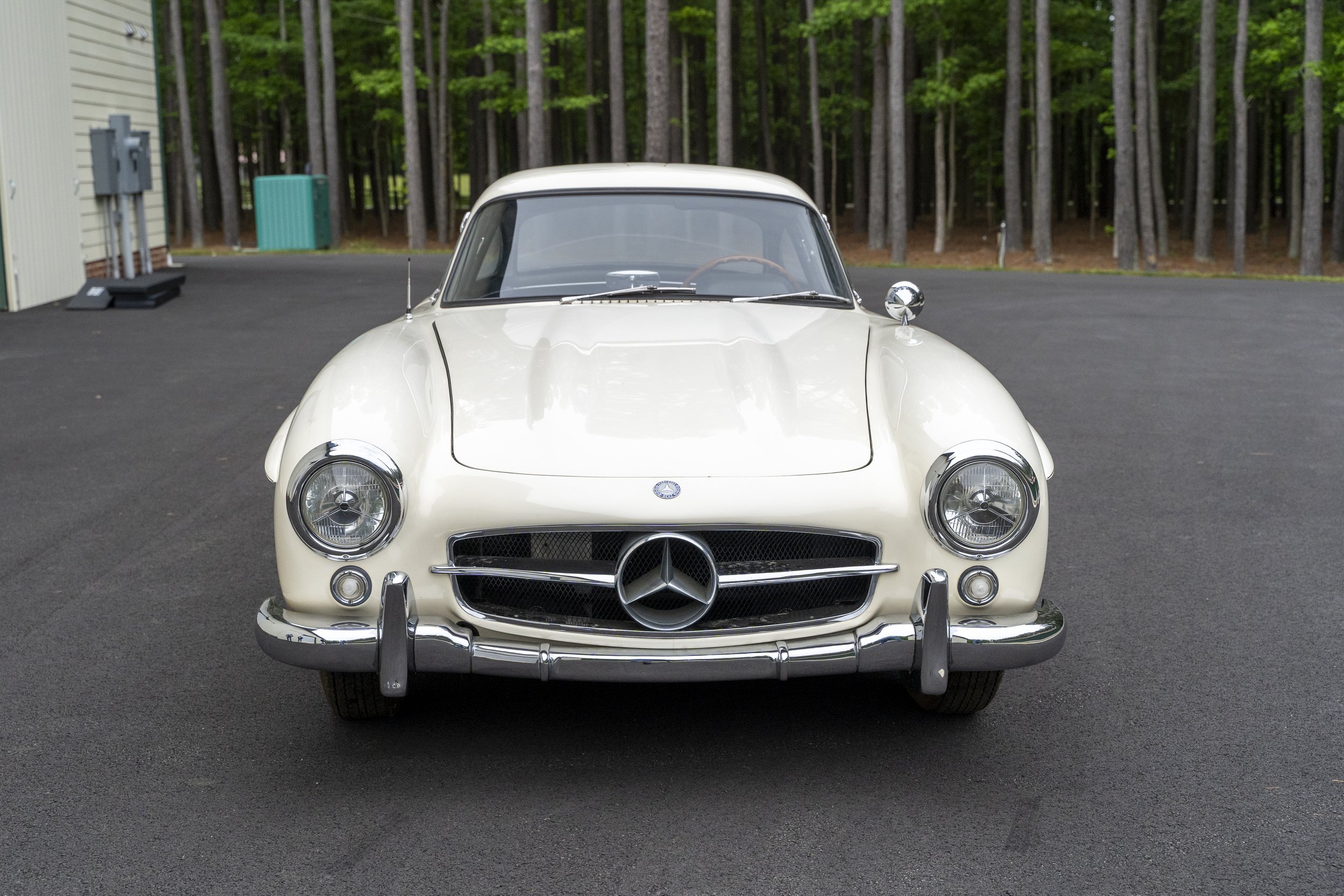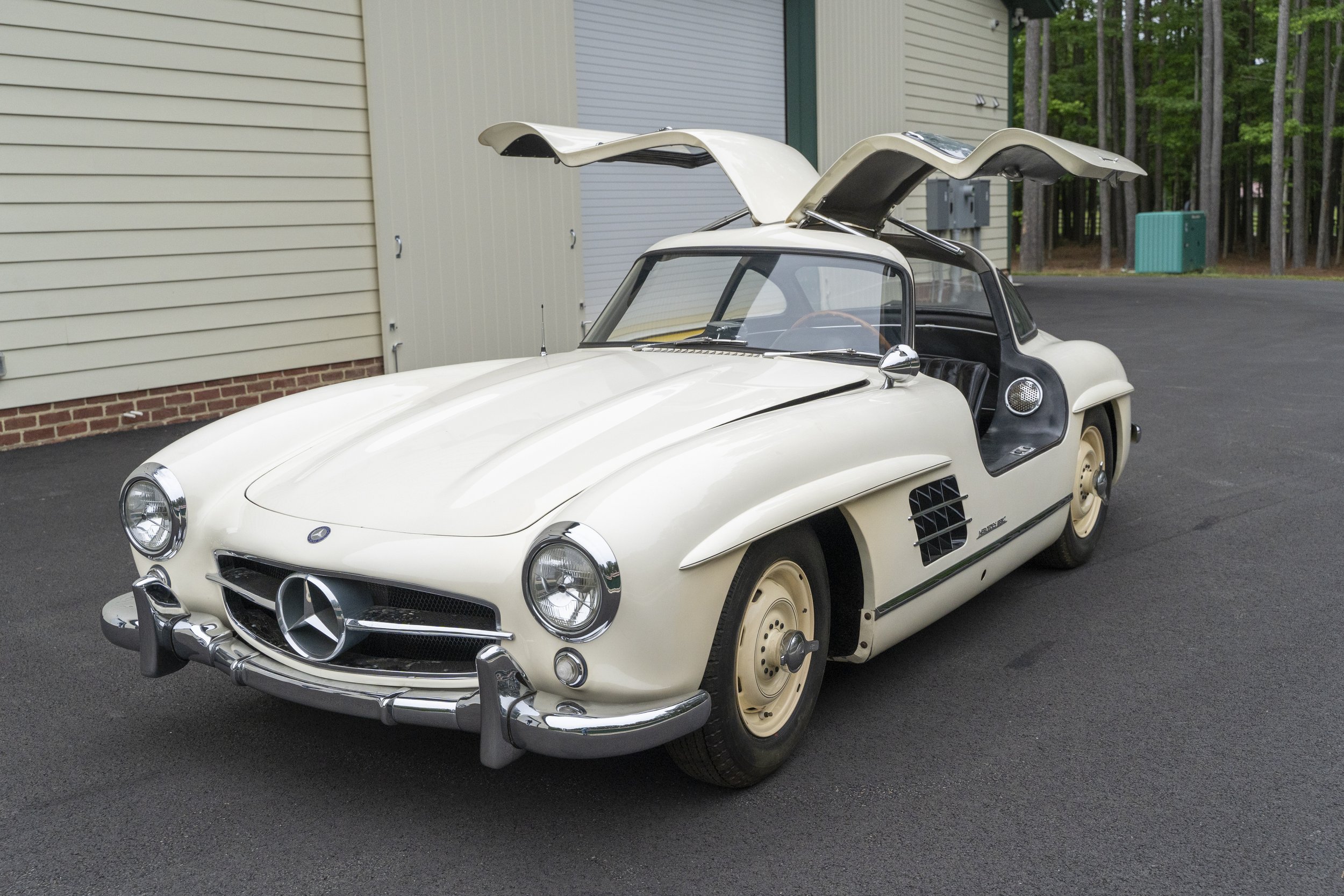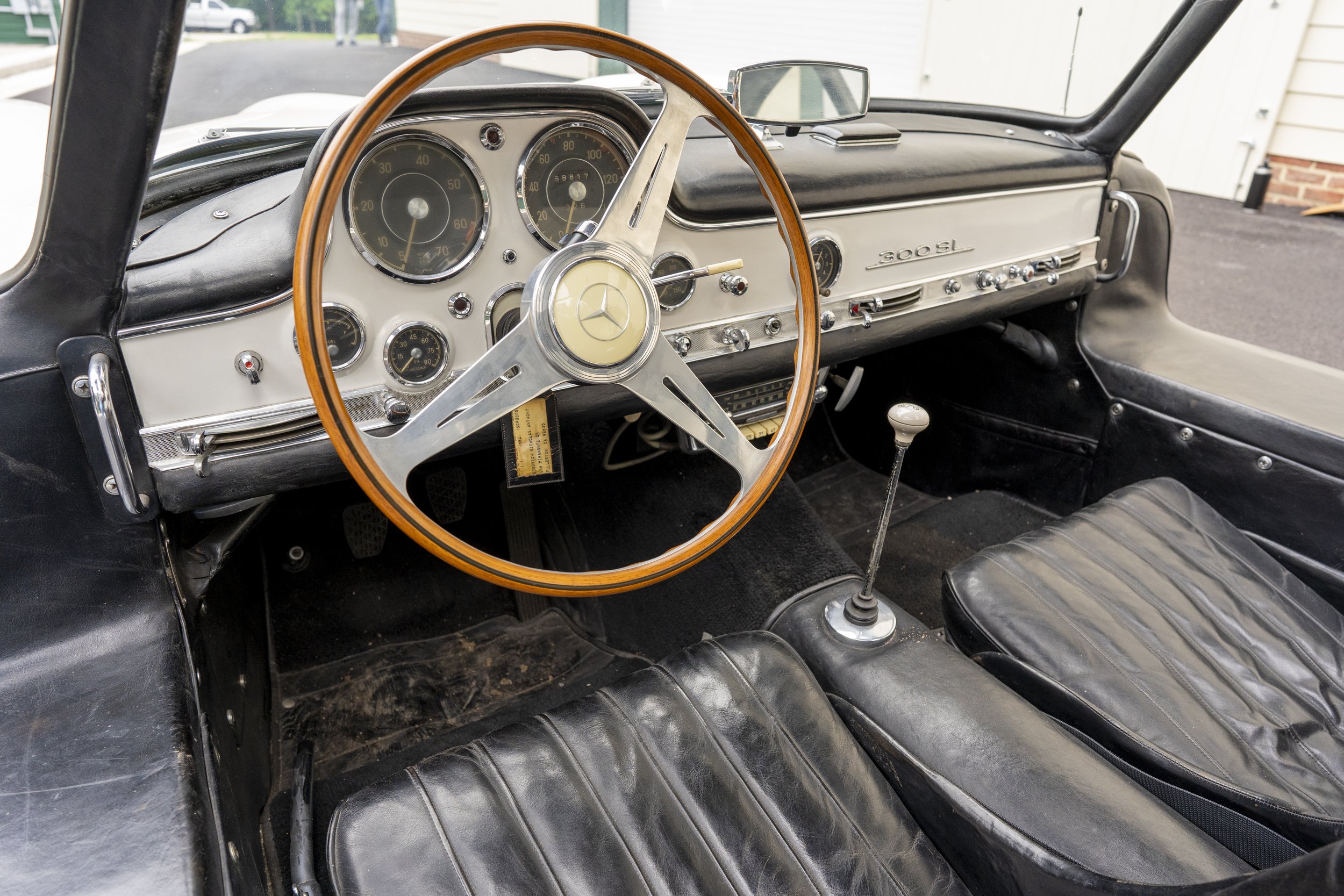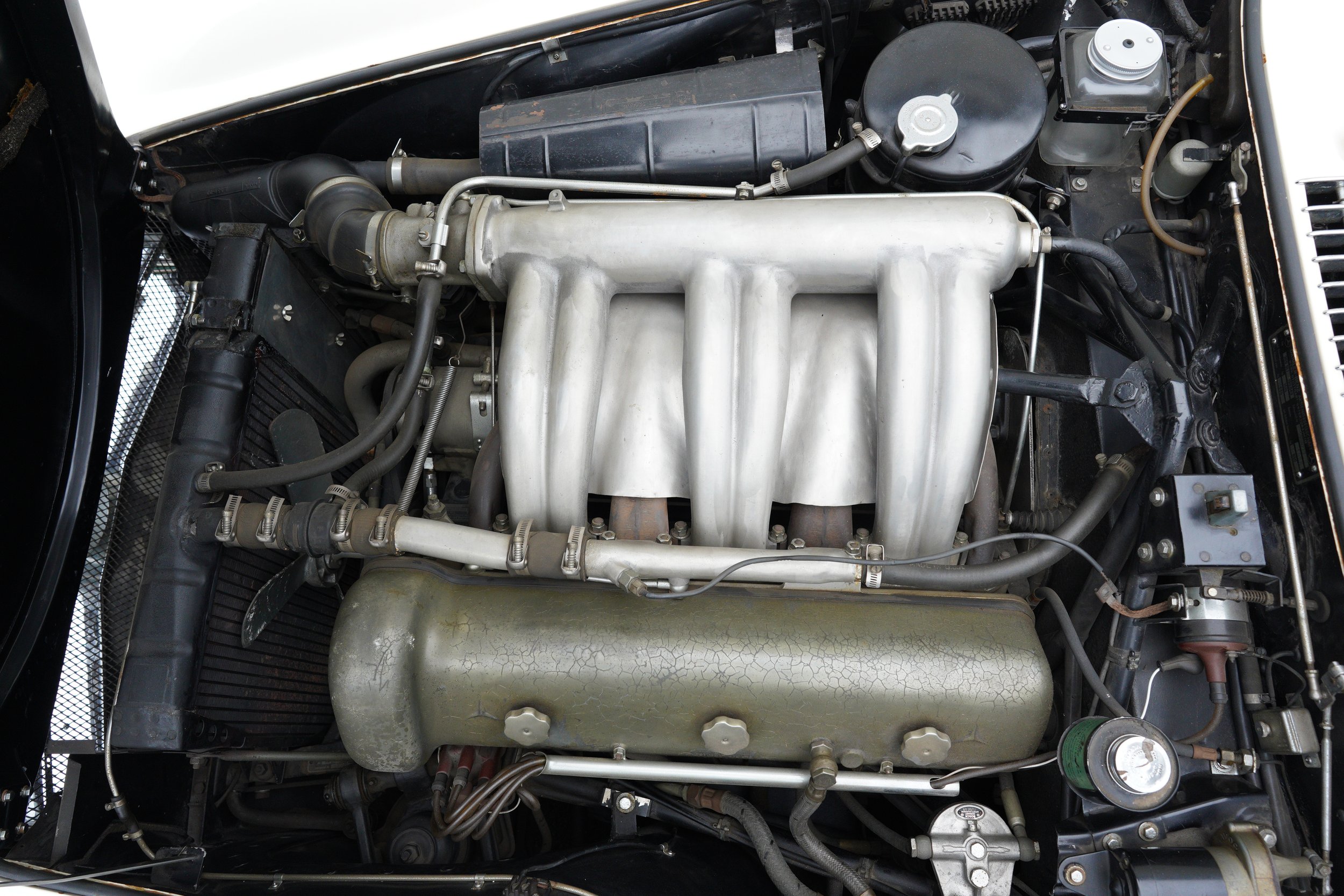1956 Mercedes-Benz 300SL “Gullwing”






●. Engineering – The street version of the legendary W194 race car, which brought Mercedes-Benz back to victory in post-war competition; first production application of gasoline direct injection in a four-stroke engine; capable of immense performance.
+ Design – Advanced tubular truss chassis necessitated the use of the unforgettable gullwing doors.
= Passion – A champion racing car for everyday use.
In 1966, Nick was hunting for a proper garage to store and work on his cars. At one of the showings, the real estate agent arrived in this 300SL. After viewing the property, Begovich decided to close the deal, choosing this garage over others to house his collection. However, the 300SL also piqued his interest, and prodded the real estate agent to sell him the Gullwing. The agent agreed, and Begovich moved the car into his new garage shortly after. Begovich kept the car for the rest of his life, until his death in 2020. We are debating whether the off-white paint is faded overpaint or an intentional California custom paint- originally DB50 bright white as can be seen on the dashboard, now a creamier color, with an interesting fade from the wheel color outboard onto the fenders- also pinstriping on wheels and wheel arch wings.
The 300SL “Gullwing” is considered by many enthusiasts to be the first supercar ever created. Bred for racing, the car was the fastest production car to date in 1955. It was introduced at the 1954 New York Auto Show, the first Mercedes-Benz to ever be launched outside of Europe. It was built at the insistence of the legendary Max Hoffman, the most successful and creative importer of European sports and luxury cars in the USA after World War II.
It is simple to understand why Begovich chose to add a Gullwing to his collection. Few cars offer a better example of how advanced engineering and striking design come together so flawlessly. The chassis of the Gullwing was designed by Mercedes’ chief engineer, Rudolf Uhlenhaut. He based his design off what is referred to as a “spaceframe.” “Spaceframes” consist of hollow tubing welded together in geometric patterns. The construction of the chassis resulted in deep side sills, necessitating significantly smaller door openings, which led to the use of the iconic “gullwing” doors. Racing regulations stated that the car must have fully functioning doors, but did not specify how they opened or closed, so the gullwing door was the most logical answer.
Because the Gullwing came from a pure racing car, the W194 of 1952, the engineers employed many of the aerodynamic aspects in its design. For example, it bears grills behind each front tire to expel the hot air from the engine compartment. Above each rear tire, it has a protruding lip to help create downforce from the expelled engine air. It also has door handles that lie flush with the body, so as not to create any extra drag. Interestingly, the windows cannot be rolled down. They must be popped out and removed completely while the car is stationary. When the windows are removed, the vent on the roof helps to keep air flowing smoothly from the interior over the rear of the car to create even more downforce.
300SL Specifications
Engine: 3.0 Liter Inline 6
Horsepower: 215 @ 5800 rpm
Torque: 202 ft/lbs @ 4600 rpm
Transmission: 4-speed manual
Top speed: 155 MPH
Weight: 2851 lbs













